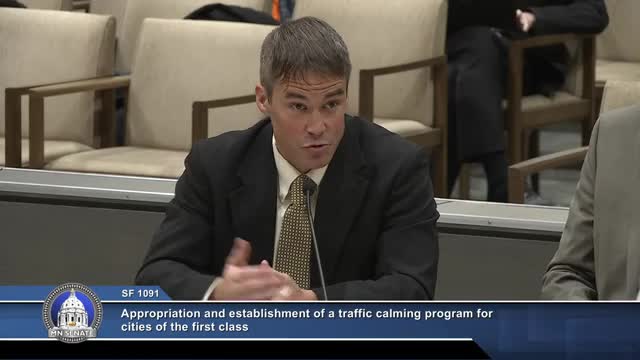Minneapolis pilots speed cushions for improved emergency vehicle access
February 10, 2025 | 2025 Legislature MN, Minnesota
This article was created by AI summarizing key points discussed. AI makes mistakes, so for full details and context, please refer to the video of the full meeting. Please report any errors so we can fix them. Report an error »

In a recent meeting of the Minnesota Senate Committee on Transportation, discussions centered around innovative traffic calming measures aimed at enhancing safety while accommodating emergency vehicles. The meeting highlighted the city of Minneapolis's proactive approach to traffic management, emphasizing the importance of collaboration with emergency response teams.
One of the key topics was the introduction of speed cushions—specialized speed humps designed to allow wider emergency vehicles to pass through while slowing down regular traffic. This pilot program aims to address concerns about response times without compromising safety on local streets. Committee members noted that while these measures can slow down traffic to 15 miles per hour, they do not significantly impact emergency response times, particularly on the last blocks leading to a destination.
Senator Howe raised concerns about the effectiveness of these measures for ambulances and emergency medical services, which often have shorter wheelbases compared to larger fire trucks. The discussion underscored the necessity of ensuring that all emergency vehicles can navigate these traffic calming features efficiently.
The committee also touched on the historical context of traffic diverters—road designs that force drivers to turn unexpectedly—which have largely fallen out of favor due to their disruptive nature. Emergency responders are now equipped with GPS systems that account for these changes, allowing them to navigate around obstacles effectively.
As the meeting progressed, the committee prepared to hear from additional testifiers, indicating a continued commitment to refining transportation strategies that prioritize both public safety and efficient emergency response. The discussions reflect a broader effort to balance community safety with the operational needs of emergency services, a challenge that many urban areas face today.
One of the key topics was the introduction of speed cushions—specialized speed humps designed to allow wider emergency vehicles to pass through while slowing down regular traffic. This pilot program aims to address concerns about response times without compromising safety on local streets. Committee members noted that while these measures can slow down traffic to 15 miles per hour, they do not significantly impact emergency response times, particularly on the last blocks leading to a destination.
Senator Howe raised concerns about the effectiveness of these measures for ambulances and emergency medical services, which often have shorter wheelbases compared to larger fire trucks. The discussion underscored the necessity of ensuring that all emergency vehicles can navigate these traffic calming features efficiently.
The committee also touched on the historical context of traffic diverters—road designs that force drivers to turn unexpectedly—which have largely fallen out of favor due to their disruptive nature. Emergency responders are now equipped with GPS systems that account for these changes, allowing them to navigate around obstacles effectively.
As the meeting progressed, the committee prepared to hear from additional testifiers, indicating a continued commitment to refining transportation strategies that prioritize both public safety and efficient emergency response. The discussions reflect a broader effort to balance community safety with the operational needs of emergency services, a challenge that many urban areas face today.
View full meeting
This article is based on a recent meeting—watch the full video and explore the complete transcript for deeper insights into the discussion.
View full meeting
